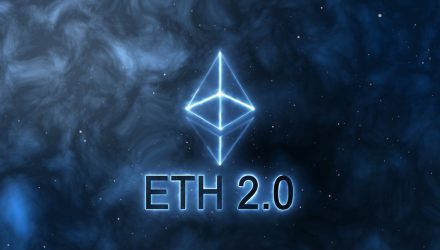Often overshadowed by Bitcoin in the news, Ethereum offers unique opportunities for investors and is on track for a bullish 2021, said VanEck in a recent webinar.
Ethereum Is Rapidly Growing
While Ethereum often trends in the same direction as Bitcoin, it is more than just a cryptocurrency token.
Ethereum is also an open-source blockchain that allows for many types of decentralized applications to be built on top of it (i.e., decentralized finance, or DeFi).
Ethereum generates its revenue from what is paid the Ethereum miners in the form of new tokens, as well as “gas” fees. The market-cap-to-miner revenue ratio can be compared most closely to Web 2.0 firms, although the top line for Ethereum is growing at a much more rapid pace.
The entire Ethereum protocol is on track for a gross transaction value of $4 trillion and will generate roughly $18 billion in revenues in 2021. Year-over-year Ethereum revenues have increased more than ten-fold between Q1 of 2020 and Q1 of 2021.
Ethereum: The Triple-Point Asset
VanEck believes that Ethereum’s potential is as a “triple-point asset.” Ethereum is a capital asset, a consumer asset, and a store of value.
A capital asset is one that creates a continuous store of value; in the case of Ethereum, that means Ethereum owners can claim the future network fees it will carry.
A consumer asset is one that can be consumed and turned into a different asset, after which it has no further value. With Ethereum, this is represented by ether tokens being consumed whenever it is traded.
A store of value is defined as something with value that can neither be consumed nor create income on its own; Ethereum (ETH) can currently be paired with other assets and used as collateral (or locked) on decentralized exchanges.
Ethereum Outperforms Consistently
Ethereum presents a paradigm shift across many sectors, but especially internet tech stocks, says VanEck.
For example, the “take rate,” or ratio between transaction values and revenue, of Ethereum is much lower compared to those for current, established internet companies.
In addition, sales growth of Ethereum, as well as DeFi apps, are astronomical in comparison to the sales growth of the global internet thus far in 2021. Ethereum has exhibited close to 300% growth, while DeFi is experiencing an estimated 1300% growth.
The price of Ethereum remains comparable to the price of global internet.
VanEck asserts that the market cap for Ethereum could exceed $2 trillion under the right circumstances (including a successful rollout of a critical update this month). Conversely, it could overshoot demand estimates and print too much ETH.
VanEck believes the bullish first possibility is more likely.
Where Does Ethereum Go Next?
The biggest unknown for Ethereum is how smoothly Ethereum 2.0 will roll out, and what changes it will create long-term.
ETH 2.0 offers drastically reduced energy consumption at 95% less consumption than ETH 1.0, as well as 99% more energy efficiency than Bitcoin. ETH 2.0 will also require less hardware and therefore will be more accessible to a greater number of people.
The update will bring about changes too by eliminating gas fees, or the fees paid to transact on the network, and burning them in a move that is akin to a share buyback.
If these fees are burned faster than new supply is created due to increasing demand, it could have a potentially deflationary impact on Ethereum.
When asked if users would find incentive in using platforms other than Ethereum, VanEck explained that the FAANGM stocks had consistently shown that scale matters when it comes to software platforms.
Ethereum is currently the largest platform in DeFi, with the greatest number of developers, applications, and users. Because the Ethereum platform is so broadly diversified and offers so many options, the size keeps costs down and would make switching cost-prohibitive, according to VanEck.
For more news, information, and strategy, visit the Crypto Channel.

